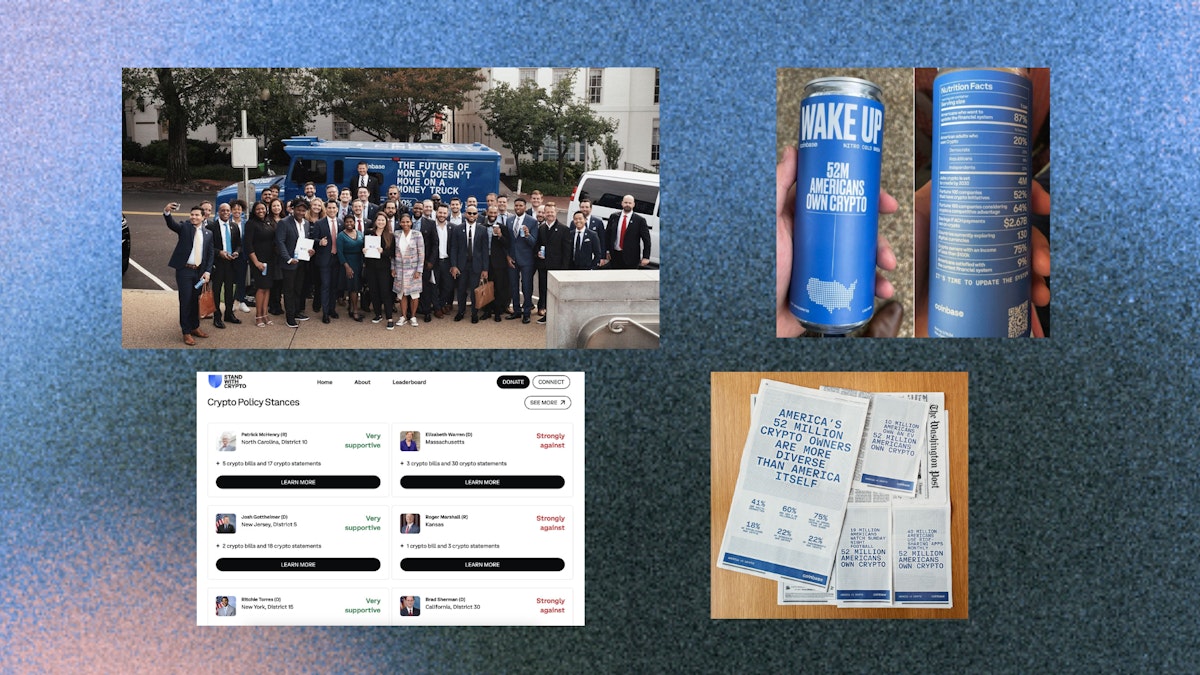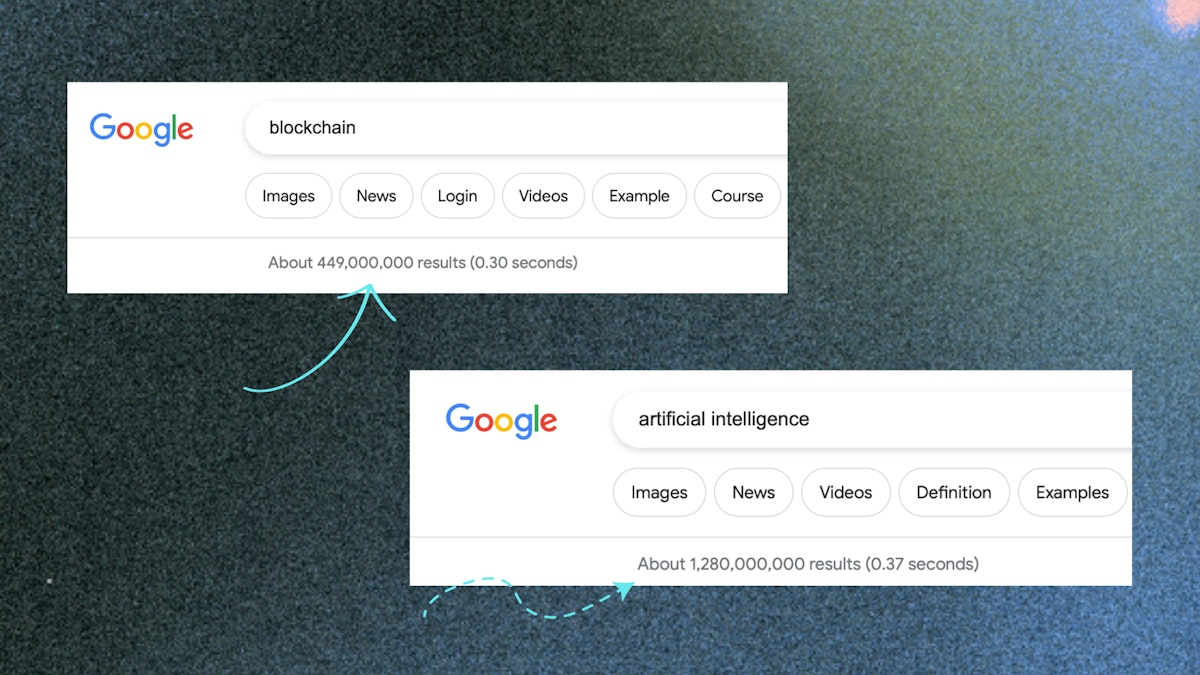
2023 has become a year of a bear market and challenges for all blockchain projects, the financing of which depends on the value of cryptocurrencies. Blockchain business players are actively preparing for a bull run fueled by the recent adoption of Bitcoin ETFs, the potential adoption of Ethereum ETFs, and the upcoming Bitcoin halving.
Despite the positive expectations for 2024, I’m concerned about conveying the blockchain’s value and prospects to the mass user. As someone with a master’s degree in sociology and management, I look at this technology through the lens of business and marketing and its impact on interpersonal communications and the social economics.
I want to share my step-by-step observations of what is currently happening with blockchain technology in the context of mass adoption, perspectives, and action plans.
This article is a must-read for Web3 builders, marketers, and all blockchain enthusiasts. I would appreciate your feedback and thoughts, and I would appreciate it if you shared this article with your friends on social media.
We enter the Web3 reality, created by nerds and visionaries
In high-tech markets, supply creates demand. Introducing new and innovative technologies can stimulate consumer demand, even if there is no initial need for these technologies. This idea challenges the traditional economic principle that demand precedes supply.
Proposals are created by visionaries who find opportunities where no one else can. Henry Ford’s quote perfectly describes the visionary approach:
“If I only did what people wanted me to do, they would still be riding in carriages”.
In 1982, cryptographer David Chaum planted the seed of a blockchain-like protocol, later nurtured by the ingenious minds of Stuart Haber and W. Scott Stornetta in 1991.
But the real breakthrough occurred in 2008 when the mysterious Satoshi Nakamoto introduced the world to a white paper outlining the blueprint for a blockchain.
Since then, the rapid development of the modern blockchain began when visionaries Vitalik Buterin, Anatoly Yakovenko, Gavin Wood, and others put their innovative ideas into practice, creating the prerequisites for the development of the third-generation Internet, Web3.
Web3 is an Internet concept that envisages broader decentralization, consolidation of the right to own content, and mass introduction of cryptocurrencies and other features provided by the blockchain. Many socio-economic requests can be satisfied because hundreds of millions of people will start behaving like Web3 users.
Let’s explore captivating examples of blockchain applications designed for the masses:
✅ Get more personal freedom with the help of cryptocurrencies that essentially deprive the institution of control over personal finances.
✅ Create transparent public procurement systems to which every country’s citizen has access. Open data is stored in blockchain and distributed servers to avoid tampering and compromise.
✅ Implement a digital passport signature in a ZK-SNARK to prove that you are a unique citizen of a given country without revealing which citizen you are.
✅ Rebuild voting systems (both at the state level and the level of organizations) and make them resistant to tampering.
✅ Collectively finance the research of independent scientists (DeSci). This will reduce the oligopoly of corporations and focus on solving specific problems in medicine.
While these use cases promise immense value, the gap between their potential and user understanding remains substantial.
Blockchain and crypto remain distant and enigmatic concepts for most people
Blockchain is still viewed with suspicion and ONLY associated with crypto. Ask your neighbour about the problems blockchain can solve or explore your child’s school curriculum, searching for any mention of blockchain. In both cases, you’re likely to find a void…
Crypto is often seen as:
📈 An investment tool with high risks;
🌘 Instrument of the shadow economy and financing of suspicious organizations;
🏎️ A closed crypto-bro culture with Lamborghinis and private jets.
Account Abstraction, Multi-Party Computation, and Advanced RPC sound attractive and promising for Web3 builders but not for users.
The industry seems more focused on forcing users to grapple with technical intricacies rather than enchanting them with the results.
Let’s look at the blockchain industry through the Design Thinking concept and the Jobs To Be Done approach. In that case, the industry tries to teach people to pick up the proper nails and drive them into the wall instead of offering a beautifully framed picture, bringing joy with every glance.
Even drop hunters, who increase a project’s TVL daily, don’t understand the essence of these projects. I had the opportunity to attend events dedicated to projects with a potential airdrop, and I saw that it’s essential for people to perform the quest tasks but not to follow the Mission.

Do they care about the mission of your project?
If you remove the element of easy profit, the blockchain ideology is not very interesting and understandable to the average person.
Techno-snobbery hinders mass adoption
Despite the ideas of decentralization, transparency, and equality, the Web3 community resembles a closed, elitist club, where only motivated and technically savvy people who identify as Web3 Natives can enter.
If you compare with AI, being a blockchain/crypto user is more difficult.
Technical snobbery does not yet allow projects to communicate with a broad audience in the way that mass adoption requires. I have witnessed some blockchain and crypto project representatives condemn their competitors for “too Web2-oriented advertising campaigns”.
Due to techno snobbery, there is a lack of inspiring stories close to reality. Promotion is impossible without storytelling. Coinbase’s “Update the system” advertising campaign became illustrative for me.

Creative marketing materials supporting the campaign
Even though it is a regulated crypto exchange that has nothing to do with decentralization, it has found feedback in the hearts of crypto enthusiasts and mass users thanks to the right (people-oriented) insight and storytelling.
As a marketing specialist who has worked at advertising agencies for 5 years and worked with Danone, Citroen, BNP Paribas, and others, I can say that Coinbase has not gone further in advertising creativity than a bank or an insurance company. But…
Such long-term and global advertising campaigns still don’t happen in blockchain and cryptocurrencies. Creating a strategic brand platform is a classic approach for many traditional companies, but it looks innovative and controversial in a fast-moving industry. Amazingly? Not at all!
From the marketing and communications side, the blockchain field is not mature and focused on techies.
Blockchain was one of the most hyped technologies. Until AI has come…
The superb work of bringing people and artificial intelligence together was done by Open AI, creating Chat-GPT.
Did digital projects and products with AI exist until November 30, 2022? Sure! Many medical devices, tools for editing text and documents, photo editors, and more exist.
However, only Chat-GPT could bring AI to the level where its advantages and disadvantages began to be discussed by mothers on playgrounds, and grey-haired university professors constantly boycotted the chatbot.
Capturing people’s heads and hearts happened like an avalanche, thanks to the familiar mechanics of creating search queries and a simple interface in the user’s native language.
It’s a bit like magic, a kind of enchantment made accessible to millions simultaneously, offering instant results with minimal effort!
If you compare blockchain with AI in the context of conveying the value of technology and communication with the mass consumer, then AI-powered projects get more ROI.
Artificial intelligence dominates the discourse, finding its way into government agendas worldwide for integration into public administration systems. I know people who used to be crypto fans but switched to AI last year because of the hype. Human attention is a minimal resource, and AI as a technology has conquered it.
If we compare these technologies according to mass interest, we see that the term “blockchain” has much less results in Google searches, and “artificial intelligence”:

More people are trying to find out about AI; it means that this technology is more attractive to discover and learn
Many environment protection organizations blame blockchain for negatively impacting nature, even after switching Ethereum to PoS. Only a few care that AI significantly increases carbon footprint and electronic waste.
In the United States, data centres where AI models are trained are the major consumers of electricity, representing approximately 2% of the nation’s total usage. These centres demand significantly more energy than standard office spaces, requiring 10 to 50 times more power per unit of floor area. But who cares?
Companies and individuals see the results of AI-powered products, and they are too promising to slow down in AI integration.
The EEE concept: Empathy, Everyday rituals, and Evangelism
A systematic effort on promotion is vital to make blockchain more than a mere technological marvel. It demands the creation of a compelling narrative around the technology, weaving clear user cases that resonate with the masses.
Technology should no longer be the star; instead, the tangible results of its integration into our daily rituals deserve the spotlight.It’s not technology that should be promoted but the result of its use in everyday rituals.
Companies and foundations need to attract and hire professionals who can combine empathy, ideology, marketing, product knowledge, and a business approach to create value propositions for different groups of people. We can call them blockchain ambassadors, advertisers or even evangelists. Yes, I didn’t add it just like that in a religious context because the dissemination of knowledge about the potential of the blockchain should be at the level of the Bible, which is the most marketing-successful book of all time.
Conditions are necessary so that one fine day, your mom tells you about a new convenient “crypto wallet for everything” that her colleagues recommended. Then, it can be considered that these blockchain ambassadors or “witnesses of the Web3 lifestyle” work well.
As someone entrenched in product messaging and communications, I aspire to be one of these blockchain evangelists. My goal? To help companies systematically nurture relationships with users, empowering them to embrace blockchain daily in different cases.
The crucial steps to make blockchain magnetic and accessible
The development of the blockchain sector is tied to the value of cryptocurrencies, especially Bitcoin. So far, DeFi is the locomotive of blockchain use, which drags all other areas and industries along with it.
The upcoming bull run will be the third one during my time in the industry, and I expect a significant increase in the number of DeFi projects that strive to make crypto more understandable and safe for the mass user.
There is already a noticeable change in some companies’ focus on improving UX, but it is still insufficient.
To accelerate the mass adoption, we must put in much effort. Here is my list of recommendations from a marketing and communications perspective that can be transformed into an action plan:
✅ Bid farewell to the techno snobbery at all levels through balanced empathy and a human-oriented approach;
✅ Craft clear narratives, brand messages, and storytelling rooted in universal human needs;
✅ Amplify brand presence through consistent, long-term, multi-channel communication;
✅ Invest in building intuitive interfaces;
✅ Develop top-notch educational initiatives;
✅ Create content (movies, books, and even songs) that effortlessly goes viral, explaining the benefits of technology in simple words.
Conclusion
I’m happy to be a part of the blockchain industry and to observe and participate in its development. I’m open to working with projects that understand the importance of building relationships with different audiences and are willing to play the long game. The vast system work awaits us ahead!
Read my previous entries about Web3 Product-Market Fit and Marketing Strategy For Blockchain Startups in 2024 and Exciting Brand Experiences With Account Abstraction: ERC-4337.
This article was originally published by Daria Volkova on HackerNoon.




